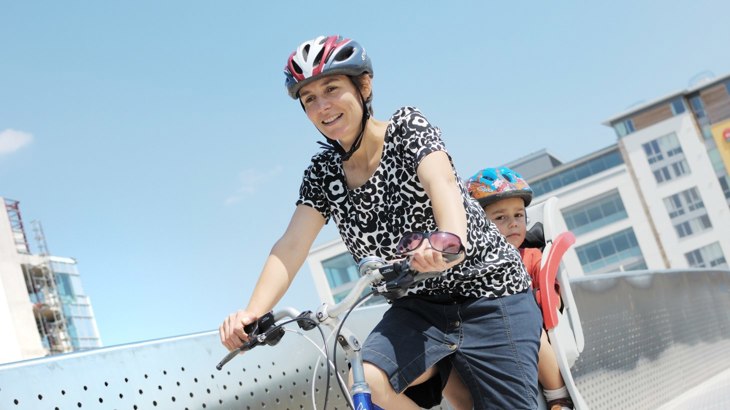In 2018 we had a flurry of activity around the Sustrans Bike Life report and in particular the launch of Women: reducing the gender gap which highlighted - amongst other statistics - that there are two men to every one woman cycling.

How can we challenge the gender gap?
Now I know we should get away from this binary distinction but still, it is a startling fact. If you attended the launch event in Bristol you will have heard from Dr Rachel Aldred who showed us the statistic that in Holland there is greater parity and that actually more women than men cycle.
And with that lack of parity comes a male-dominated culture – the bikes, the clothes, the way we ride, the routes and neighbourhoods we and others design. What part of that equation can we, as individuals change to help close the gender gap and essentially generate a massive increase in the numbers of people cycling?
I’d heard a little of this before (or chose to only hear a little of it), that men create a negative and hostile environment. By being competitive on our routes, wearing armour, and by just being thoughtless. Now I know it isn’t just men who can ride in that manner but if the cap fits.
So when I was listening to the panel which included one of our partnership managers, Megan Streb, journalist Laura Laker, founder of Kidical Mass, Zoe Banks Gross and Dr Rachel Aldred talk about this, I was sat there and I thought “not me, I ride like a saint” or words to that effect. But alarm bells rang.
I can remember thinking similar when reading Grayson Perry’s book, The Descent of Man. In a commentary about the book he mentioned that when he talks to men about their privileged place in society and their unconscious misogyny they will often respond with “not me, I’m different” but then over the course of a discussion they realise that actually, yes, they - or we - are massively privileged.
The same happened to me – I didn’t think I was privileged, I didn’t think I act in a privileged and exclusive fashion but the book showed me where I did indeed have privilege. So I caught myself when I responded with “not me I ride like a saint” – and rather than dismiss the assertion that I am part of the problem I had a good look at myself. And there was clearly room for improvement. The speed I ride and how close I pass people being the two major points. I also considered what I look like – what I wear, my posture.
I tried not wearing my helmet but I felt naked and couldn’t do it. But I have changed how I ride. I don’t judge people on what they are riding, what they are wearing or their apparent gender. I don’t use that to tell me how to ride – I treat everyone the same.
So what is my shout out to you – what am I saying - well in addition to saying that the gender gap report was fantastic, a real eye-opener for me and others, I suppose it is this if you want to help create a truly inclusive cycling culture - challenge yourself.
Challenge your own actions and your perspective – how can you be even more inclusive? How can you reduce or remove any behaviours that exclude others? Because I know it isn’t just men. I see all sorts of riding on my daily commute by all sorts of people that terrifies others excludes them and maybe even dissuades others from riding in the future.
What can you change? How can you, in your community, lead by example?

